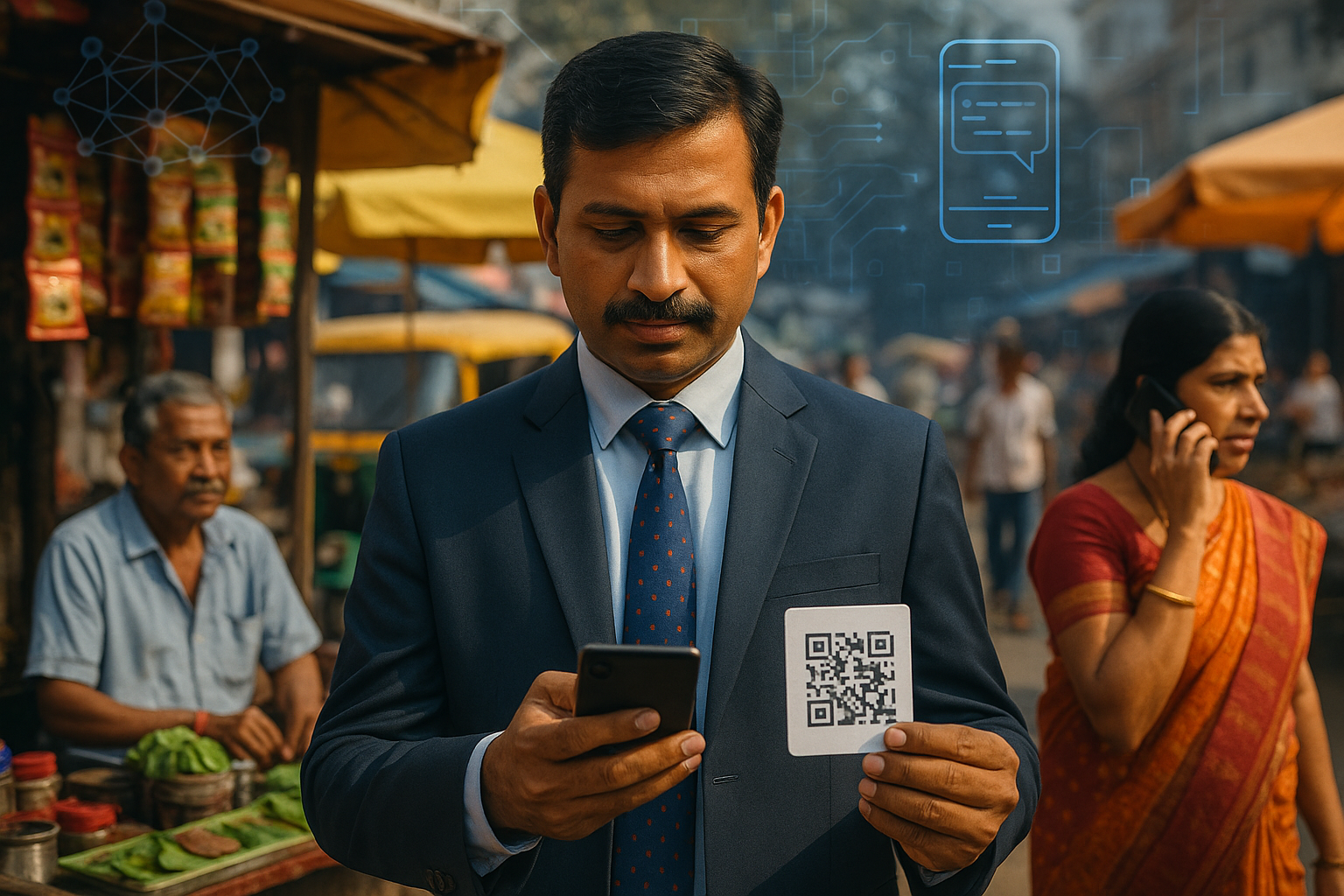One of my favourite essays is Eric S. Raymond’s The Cathedral and the Bazaar. Originally written about the evolution of free and open-source software, it contrasts two models of creation. The essay drew a powerful comparison between Microsoft’s top-down software development model and the emerging Linux ecosystem, which was one of the first large-scale open-source projects to challenge proprietary dominance.
The “cathedral” is deliberate, top-down, and orderly—built by a select group of experts behind closed doors. It represents authority, stability, and precision. The “bazaar”, by contrast, is open, noisy, and constantly evolving. It thrives on contribution, improvisation, and emergence.
While Raymond wrote this with software in mind, I’ve often seen the same dynamic play out in entirely different domains, including how technology evolves in India. We are, quite literally, a bazaar. In the economic sense for sure, but also in how ideas, tools, and behaviours get exchanged, adapted, and transformed.
Walk through any Indian street market and you’ll see it in action. A paan stall that’s become trendy on Instagram. A sugarcane juice vendor with a QR code. A tailoring shop that takes orders via WhatsApp voice notes. Innovation here builds from what’s available.
That’s what makes India significant in the age of AI. We may not build foundational models or lead global research. But we will be the place where AI is reshaped by users who localise it in ways no lab could predict: a farmer using voice AI to check mandi rates in Marathi. A homemaker using image-to-text tools to help her child with schoolwork. An autorickshaw driver using ChatGPT to write a birthday poem for his daughter. A TV repair shop using Gemini’s live mode as a diagnostic tool. A small-town tailor who finds instructions to make the latest Paris designs for local celebrities. And this is just the surface.
India’s strength lies in stretching technologies to local needs, reshaping them, and unlocking business models rooted in context. Use cases are not always discovered by companies designing products or services. They’re discovered by users.
Improvisation at scale
This pattern of stretch isn’t new. We’ve seen it before, long before AI arrived.
I cut my teeth working in the mobile domain at Motorola way back in the late 2000s. It’s been a fascinating journey witnessing how mobile technology has evolved in India, not just in terms of hardware or connectivity, but in how people have made it their own.
What started as a tool for the wealthy, an alternative to landlines and PCO booths, quickly became something else entirely. As devices and network access became more affordable, they were repurposed in ways no one had anticipated. They became the lifelines of gig workers, the directories of informal supply chains, and the bridges connecting rural homes to distant families.
I still remember the first time I heard a devotional chant play while calling a relative. It caught me off guard, but it also told me something instantly about who they were. For years, CRBTs (Caller Ringback Tones) became a way to signal taste, mood, or identity without saying a word. A Shah Rukh Khan dialogue for swagger. A bhajan for devotion. A Puneeth Rajkumar song that told you the caller was full of energy.
For many first-time mobile users, this was a rare space for digital self-expression. CRBTs offered a sense of presence in a world where apps were still English-first and interfaces rarely reflected them.
My sister, who is a doctor in Ahmedabad, even today uses a Tamil song as her caller ringback tone. When I asked her why, she said many of her patients are from Tamil Nadu, and they immediately feel welcome when they hear it. I asked, What about locals? She smiled and replied that once she picks up the phone and speaks fluently in Gujarati, there’s a visible response—someone from outside who knows the local language. That small detail builds trust across languages.
Caller ringback tones may have seemed like an improbable business. But in India, they became something else entirely: a way of signalling aspiration and identity without having to say anything. What telcos saw as a retention feature, users turned into a cultural marker.
This is just one example of how technology is shaped to fit the context of people’s lives. Another is the much-ridiculed “Good Morning” message—those forwards that flood WhatsApp every morning.
For many of us in urban India, they’re seen as a minor nuisance. But look closer. For elders, especially those less fluent in English or less confident with digital platforms, these messages offer presence, routine, and a way to stay visible.
I’ve seen uncles, aunts, and parents use these messages the way younger users use emojis: brief cues to stay in touch, express warmth, and remain visible in a world that scrolls past them. When someone is going through a difficult time, they’ll find and forward a specific message of encouragement. Or send each other a prayer.
During the pandemic, I remember many elders in the family being part of prayer WhatsApp groups. Many of the groups had an admin who assigned specific chapters to be read to individuals. And after they finished, each member was to post an update with a specific colour emoji. Who said only adolescents have hidden languages in emojis? These senior citizens would give them a run for their money.
To succeed in India, adapt
In 2016, I was invited by Google to their San Francisco office to mentor startups from India, Brazil, Indonesia, and Mexico. Across all four markets, one pattern stood out: alignment with user behaviour outperformed novelty.
One Indian startup I mentored had an unusual journey. It began with a tweet promising Sachin Tendulkar photos and stats in exchange for phone numbers. Over 2,000 people shared their numbers as Twitter comments. The founders used WhatsApp groups to distribute content. But they soon noticed something deeper: users weren’t just consuming content. They were resharing, remixing, and reacting through visuals. This prompted the startup to shift focus to image-based communication for those not well-versed in English. Eventually, that became the basis for their own social network.
In most countries, asking for phone numbers like that would raise privacy concerns. Here, it became a launchpad.
This acute sensing of how users play with new products or services is key to succeeding in India. Even global firms realise this. That’s why IKEA, which is a DIY brand all over the world, offers assembly services in India. And Uber, when it launched, had people at airports who helped book cabs.
But this play can also lead to fresh discoveries. Indian users reveal edge cases that become core cases elsewhere.
YouTube’s offline downloads, originally meant for users with patchy connectivity, turned out to be useful for commuters worldwide. Google Maps’ two-wheeler mode was built in response to India’s dense streets, but made sense elsewhere too. Voice-first interfaces were adopted here out of necessity and preference, and reshaped interface design in other regions.
Stretch is the strategy
And this brings us back to the question of AI and opportunities. A lot has been written about how India missed the bus on foundational models and is playing catch-up. But this conversation misses the blind spot: Indian users go off script, and treating India as a usage lab sparks fresh innovation.
India is exciting. But it is also constrained. Budgets are tighter. Behaviours vary more widely. Investor attention moves fast.
So founders here must place sharper bets. Especially in AI, where hype is high, but infrastructure is expensive.
Not every startup needs to build models. Some will win by fitting existing tools to the right problems, in the right way.
This is also where the right ecosystem support can make a huge difference. Having spent the last decade closely associated with Google for Startups, I’ve seen how structured mentorship, infrastructure, and access to technical expertise can help founders navigate these realities faster. Good accelerators aren’t about giving startups a script. They’re about helping them stress-test their own product ideas with experts from various domains like consumer understanding, marketing, product strategy, and AI fitment.
The most powerful AI-enabled breakthroughs in India will likely not come from building everything from scratch. They’ll come from seeing what happens when the right tool meets the right constraint, and users make it their own and create their own breakthroughs.
If you want to understand how technology truly spreads, watch what India does with it.

